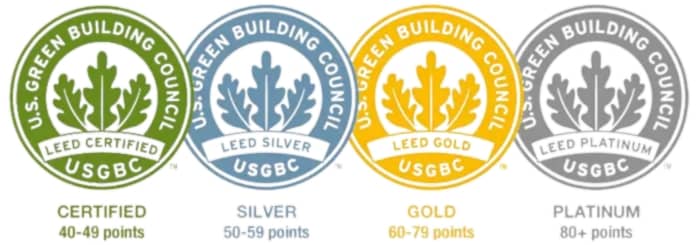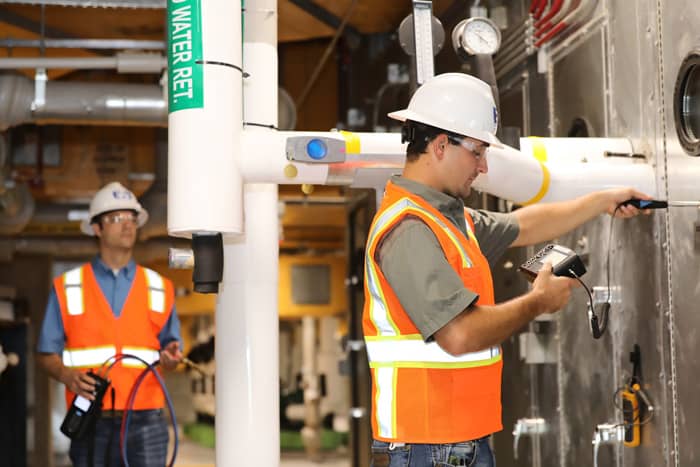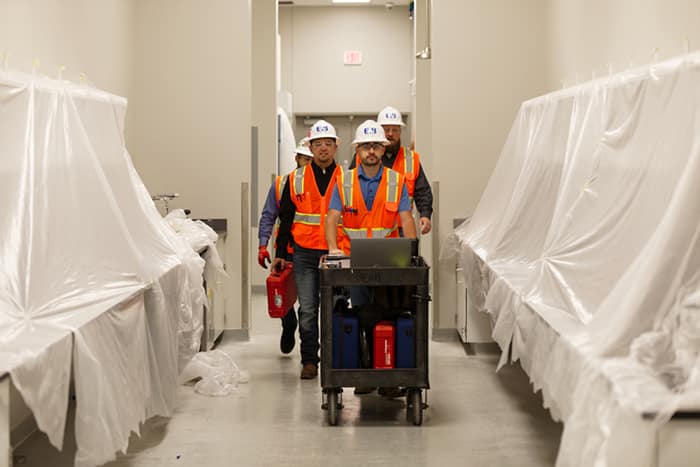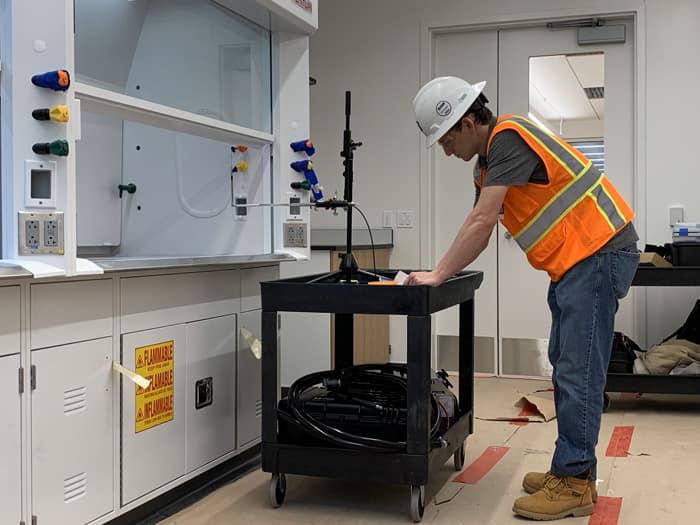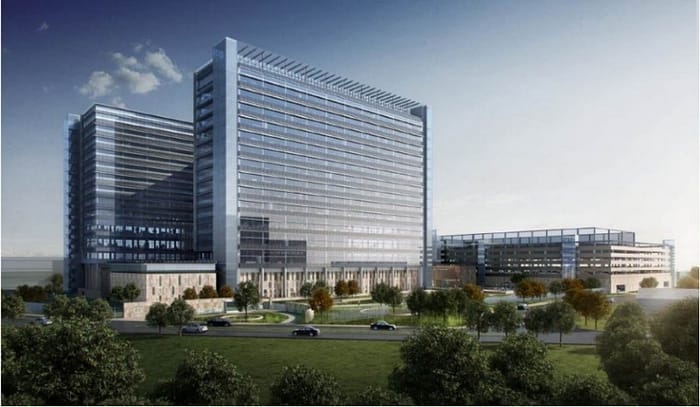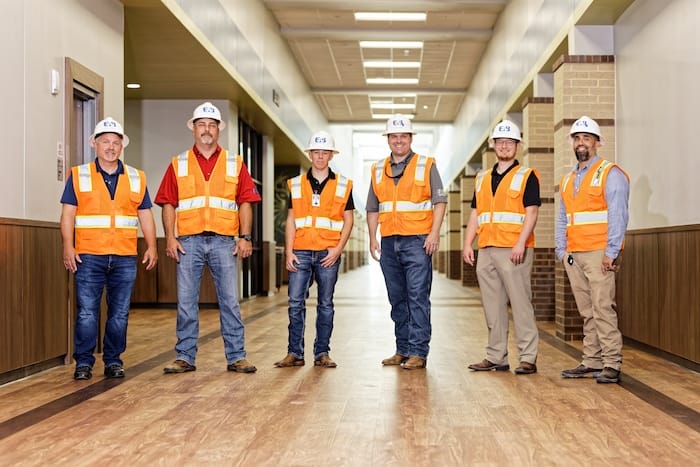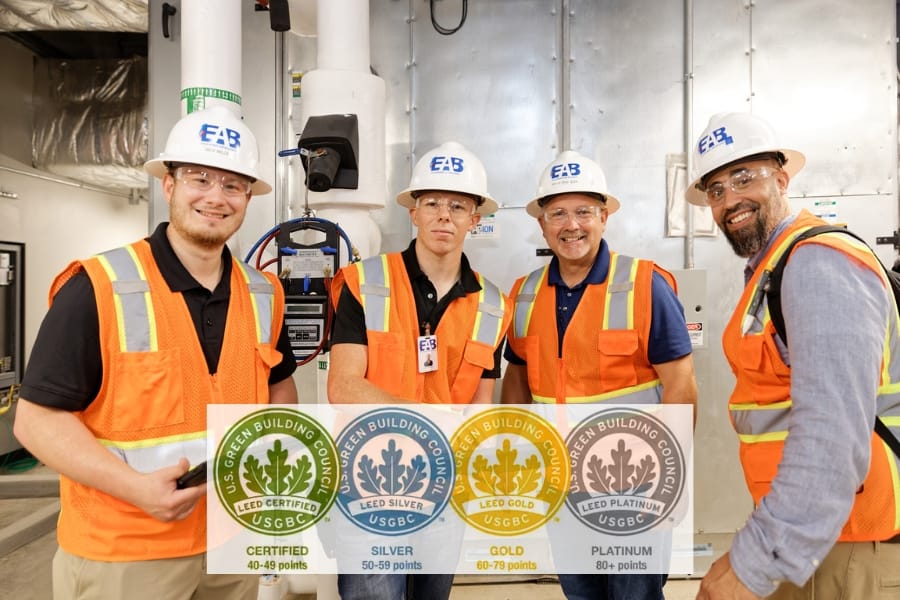
What if your building could reduce its environmental impact, enhance occupant well-being, and significantly lower operational costs? LEED certification makes this possible. As one of the most recognized green building certification systems worldwide, LEED (Leadership in Energy and Environmental Design) represents a commitment to sustainability, energy efficiency, and long-term performance. This guide explores what LEED certification is, how it works, and the benefits it brings, featuring the Phillips 66 Corporate Headquarters Campus as a real-world example of success.
What is LEED Certification?
LEED certification is a globally recognized framework for designing, constructing, and operating sustainable buildings. Developed by the U.S. Green Building Council (USGBC), LEED evaluates a building’s environmental performance across key categories, awarding points based on adherence to sustainable practices. Buildings can achieve one of four certification levels, reflecting their commitment to environmental responsibility.
LEED Certification Levels
The LEED rating system awards points in various categories, which are tallied to determine the certification level. The levels are:
- Certified (40–49 points): Recognizes foundational sustainability practices.
- Silver (50–59 points): Demonstrates additional efforts toward environmental responsibility.
- Gold (60–79 points): A high standard of sustainability with significant energy and resource efficiencies.
- Platinum (80+ points): The pinnacle of sustainability, showcasing exceptional performance in all LEED categories.
Each level signifies a building’s achievement in reducing its environmental footprint, enhancing occupant health, and conserving resources.
LEED Rating Systems
LEED certification offers multiple rating systems tailored to different building types and uses. These include:
- LEED for Building Design and Construction (BD+C): For new constructions and major renovations.
- LEED for Interior Design and Construction (ID+C): For commercial interiors and tenant fit-outs.
- LEED for Operations and Maintenance (O+M): Focuses on existing buildings’ sustainability during operation.
- LEED for Neighborhood Development (ND): For larger-scale community and neighborhood projects.
- LEED for Homes: Designed for single-family, low-rise, and mid-rise residential properties.
Key Categories Evaluated in LEED Certification
LEED certification evaluates buildings across several sustainability-focused categories:
1. Energy Efficiency
Optimizing energy performance is a cornerstone of LEED certification. Points are awarded for reducing energy consumption through efficient HVAC systems, renewable energy sources, and building automation systems.
2. Water Conservation
Efficient water use, including low-flow fixtures, rainwater harvesting systems, and water recycling processes, earns points under this category.
3. Indoor Air Quality (IAQ)
IAQ standards focus on maintaining a healthy indoor environment through proper ventilation, pollutant control, and the use of low-emitting materials.
4. Sustainable Materials
Using recycled, renewable, or locally sourced materials can contribute significantly to a building’s LEED score.
5. Site and Location
LEED evaluates site selection, access to public transportation, and efforts to minimize environmental disruption.
6. Innovation in Design
Points are awarded for creative and forward-thinking approaches to sustainability not covered in the other categories.
Benefits of LEED Certification
LEED certification offers tangible benefits that extend beyond environmental stewardship:
- Reduced Operational Costs: Energy-efficient systems and water conservation measures significantly lower utility bills.
- Enhanced Occupant Health: Better air quality, natural lighting, and thermal comfort contribute to improved well-being and productivity.
- Higher Property Value: LEED-certified buildings are often more attractive to tenants and buyers.
- Regulatory Compliance: LEED aligns with many local and federal environmental regulations, streamlining compliance efforts.
- Positive Environmental Impact: Sustainable practices reduce carbon footprints and conserve natural resources.
How to Achieve LEED Certification
1. Set Sustainability Goals
Define objectives and select the appropriate LEED rating system for your project.
2. Incorporate Sustainable Design
Work with architects and engineers to integrate sustainable features into your building’s design.
3. Develop a Commissioning Plan
Commissioning ensures systems like HVAC and lighting are designed, installed, and function as intended.
4. Submit Documentation
Gather required documentation for each category to demonstrate compliance with LEED standards.
5. Earn Points and Certification
After review by the USGBC, your building will receive points and its corresponding LEED certification level.
Case Study: Phillips 66 Corporate Headquarters Campus
The Phillips 66 Corporate Headquarters Campus in Houston, Texas, exemplifies the value of LEED certification. This state-of-the-art facility achieved LEED Platinum Certification, the highest level, thanks to its commitment to sustainability and innovative building practices.
Challenges and Goals
As a corporate campus housing thousands of employees, the Phillips 66 headquarters required exceptional performance in energy efficiency, indoor air quality, and resource conservation. The goal was to create a sustainable, comfortable, and efficient environment that aligned with the company’s environmental commitments.
EAB’s Role
Engineered Air Balance (EAB) played a pivotal role in achieving LEED Platinum Certification through expert commissioning services:
- Design Phase Review
EAB worked closely with the design team to evaluate plans and identify opportunities to optimize energy performance, water conservation, and IAQ. - System Verification and Functional Performance Testing
EAB conducted rigorous testing of the building’s HVAC, lighting, and water systems. Functional performance testing validated that all systems operated as designed under various conditions, ensuring efficiency and reliability. - Issue Resolution
During commissioning, EAB identified and resolved issues, such as airflow inconsistencies and sensor calibration errors, ensuring optimal performance. - Sustainability Metrics
EAB provided detailed documentation of system performance, contributing critical data for the LEED certification application.
Results and Impact
- Energy Efficiency: Optimized HVAC and lighting systems reduced energy consumption significantly.
- Water Conservation: Low-flow fixtures and efficient water management systems supported resource conservation goals.
- Enhanced Indoor Air Quality: Advanced filtration systems and balanced ventilation created a healthy indoor environment.
- LEED Platinum Certification: EAB’s efforts helped secure the highest level of LEED certification, underscoring the facility’s commitment to sustainability.
The Phillips 66 project showcases how expert commissioning services can drive sustainability and operational excellence in large-scale facilities.
LEED Certification and Long-Term Building Performance
Achieving LEED certification is not just about meeting initial criteria; it’s about ensuring long-term performance. Properly commissioned systems operate efficiently over time, reducing maintenance needs and sustaining environmental benefits. By investing in LEED certification, building owners demonstrate a commitment to sustainability that resonates with stakeholders and contributes to a greener future.
Partner with EAB for LEED Certification Success
LEED certification is a powerful tool for creating sustainable, efficient, and high-performing buildings. From reducing costs to enhancing occupant well-being, the benefits are both immediate and long-lasting. As demonstrated by the Phillips 66 Corporate Headquarters Campus, expert commissioning is a critical component of achieving LEED certification and ensuring system reliability.
If you’re planning a sustainable building project, Engineered Air Balance (EAB) can help you achieve your goals. With extensive experience in LEED commissioning, we ensure that your building operates at its best and aligns with sustainability standards. Contact us today to learn more about how we can support your journey to LEED certification and beyond. Let’s build a greener future together.

